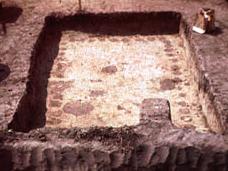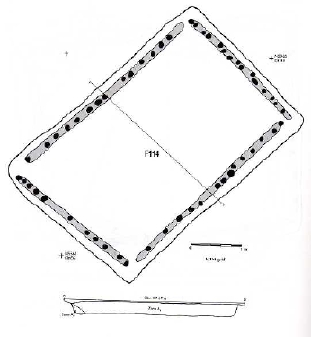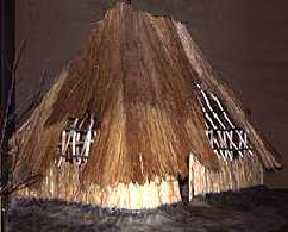
Post-wall House 34, Cahokia site tract 15B.

Plan map of wall trench house (Radic site) illustrating the dug out floor (below) and how wall posts were set into
trenches (above).
|
The typical Mississippian house, the wall-trench house, was a four-sided,
partially subterranean structure with dirt banked along woven mat walls and a
steeply pitched thatch roof. (Note that in spite of the frequent reconstruction
of Mississippian houses with wattle and daub walls, none are known from the
American Bottom.) The wall-trench house made its initial appearance in the
Lohmann phase (A.D. 1050-1100) when it began replacing the previous post-wall
house construction, and it became the predominant house structure by the
Stirling phase (A.D. 1100-1200). The name wall-trench comes from the wall
design in which wooden poles were placed in a trench dug for each wall. Pieces
of thatch with cord-wrapping at one end indicate bundles of grass were used to
construct the roofs. Regular house maintenance may have been required by wind
damage and rotting thatch. Evidence for other construction techniques are found
on impressions of the pieces of mud suggesting wall repair.

Wall-trench house reconstruction. Note the earth banked along the woven mat walls. Dickson Mounds Museum.
|


